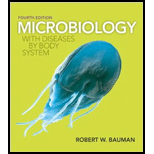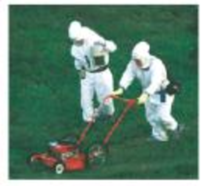
Nightmare on the Island

Peggy loves her time on The Island each year. Her parents had taken her every year to the resort destination as a girl, and now she is doing the same with her children. Their seaside home near Cape Cod, Massachusetts, is modest in comparison to some of the neighbors’, but it has been in Peggy’s family for over a hundred years, and she has fond memories from every stage of her life. One of Peggy’s fondest memories is playing tag with her friends on the lawns of The Island’s homes. Now, she smiles as she watches her eight-year-old son, Jacob, help the older son of one of her childhood girlfriends mow the grassy expanse. “Building memories- that’s what it’s about ,” she muses. Little does she know that some memories can build nightmares.
Three days later Jacob wakes up complaining of a scratchy throat, headache, and “soreness all over.” Peggy is concerned about his dry cough and 103°F temperature. “A summer cold?” she wonders. She keeps Jacob in bed, which isn't difficult because his breathing becomes more labored and painful. Two days later he begins coughing up blood, and Peggy recognizes that this isn’t an ordinary summertime cold.
She rushes Jacob to the local clinic, where the doctor orders immediate intravenous streptomycin and transport to a hospital on the mainland. The physician tells Peggy that Jacob is likely infected with the most virulent bacterium known. He questions her about Jacob’s activities on the island: Has the boy touched any animals? Done any outdoor activities? Been bitten by a tick? “No, no, no.” Then she recalls that Jacob helped mow the grass earlier in the week.
Within days, Jacob feels better and can answer questions. He tells the doctor that the lawnmower had run over the dried body of a small dead rabbit. The physician suspects the mower had spewed bacteria into the air; Jacob had inhaled a near-fatal dose.
The grassy lawn will no longer recall the fond memories of Peggy’s childhood; instead, she will remember men in biohazard suits taking samples, documenting the nightmarish time she almost lost her son.
- 1. What bacterium infected Jacob?
- 2. What is a common name of the disease afflicting Jacob?
- 3. What do the laboratory scientists at the hospital determine about the Gram reaction of the bacterium?
- 4. Why didn’t the physician use penicillin instead of streptomycin?
Want to see the full answer?
Check out a sample textbook solution
Chapter 21 Solutions
Microbiology with Diseases by Body System (4th Edition)
- UARDIAN SIGNA Life Sciences/ Baseline Test Grade 10 ry must be written in point form. pot in full sentences using NO MORE than 70 words sentences from 1 to 7. only ONE point per sentence. words as far as possible. number of words you have used in brackets at the end GDE/2024 QUESTION 3 The table below shows the results of an investigation in which the effect of temperature and light on the yield of tomatoes in two greenhouses on a farm was investigated. TEMPERATURE (°C) AVERAGE YIELD OF TOMATOES PER 3.1 PLANT (kg) LOW LIGHT LEVELS HIGH LIGHT LEVELS 5 0,5 0,5 10 1,5 2,5 15 3,0 5,0 20 3,6 8,5 25 3,5 7,8 30 2,5 6,2 State TWO steps the investigator may have taken into consideration during the planning stage of the investigation. (2) 3.2 Identify the: a) Independent variables (2) b) Dependent variable (1) 3.3 Plot a line graph showing the results of the average yield of the tomatoes from 5°C to 30°C for low light levels. (6) 3.4 State ONE way in which the scientists could have improved the…arrow_forwardExplain why you chose this mutation. Begin by transcribing and translating BOTH the normal and abnormal DNA sequences. The genetic code below is for your reference. SECOND BASE OF CODON כ FIRST BASE OF CODON O THIRD BASE OF CODON SCAGUCAGUGAGUCAG UUU UUC UCU UAU UGU Phenylalanine (F) Tyrosine (Y) Cysteine (C) UCC UAC UGC Serine (S) UUA UUG Leucine (L) UCA UCG_ UAA UGA Stop codon -Stop codon UAG UGG -Tryptophan (W) CUU CUC CCU CAU CGU Histidine (H) CCC CAC CGC -Leucine (L) Proline (P) CUA CCA CAA CUG CCG CAG-Glutamine (Q) -Arginine (R) CGA CGG AUU ACU AAU AGU AUC Isoleucine (1) Asparagine (N) ACC AAC Threonine (T) AUA ACA AAA Methionine (M) Lysine (K) AUG ACG Start codon AAG AGC-Serine (S) -Arginine (R) AGA AGG GUU GCU GAU GUC GUA GUG GCC Valine (V) -Alanine (A) GCA GCG GAC GAA GAG Aspartic acid (D) GGU Glutamic acid (E) GGC GGA GGG Glycine (G) In order to provide a complete answer to the question stated above, fill in the mRNA bases and amino acid sequences by using the Genetic Code…arrow_forwardidentify the indicated cell in white arrowarrow_forward
- Gloeocaspa Genus - diagram a colony and label the sheath, cell wall, and cytoplasm. Oscillatoria Genus - Diagram a trichome, and label the shealth and individual cells Nostoc Genus- diagram a sketch of the colonoy microscopically from low power to the left of the drawing. Draw a filament showing intercalary heterocysts, and vegatative cells to the right of the drawing Merismopedia Genus- diagram a sketch of the colony. draw and label a filament showing the colony, cell wall, and sheath. Gloeotrichia Genus- diagram a habit sketch of the colony. draw a filament showing the heterocyst, akimetes and vegatative cells of the filamentarrow_forwardOf this list shown, which genus does the image belong toarrow_forwardidentify the cell shownarrow_forward
- identify the genusarrow_forwardWhat Genus is this?arrow_forwardAs a medical professional, it is important to be able to discuss how genetic processes such as translation regulation can directly affect patients. Think about some situations that might involve translation regulation. Respond to the following in a minimum of 175 words: Why is translation regulation important? What are some examples of translation regulation in humans? Select one of the examples you provided and explain what happens when translation regulation goes wrong.arrow_forward
- The metabolic pathway below is used for the production of the purine nucleotides adenosine monophosphate (AMP) and guanosine monophosphate (GMP) in eukaryotic cells. Assume each arrow represents a reaction catalyzed by a different enzyme. Using the principles of feedback inhibition, propose a regulatory scheme for this pathway that ensures an adequate supply of both AMP and GMP, and prevents the buildup of Intermediates A through G when supplies of both AMP and GMP are adequate.arrow_forwardQUESTION 27 Label the structures marked A, B, C and explain the role of structure A. W plasma membrane For the toolbar, press ALT+F10 (PC) or ALT+FN+F10 (Mac). BIUS ☐ Paragraph Π " ΩΘΗ Β Open Sans, a... 10pt EEarrow_forwardexamples of synamptomorphyarrow_forward
 Medical Terminology for Health Professions, Spira...Health & NutritionISBN:9781305634350Author:Ann Ehrlich, Carol L. Schroeder, Laura Ehrlich, Katrina A. SchroederPublisher:Cengage LearningUnderstanding Health Insurance: A Guide to Billin...Health & NutritionISBN:9781337679480Author:GREENPublisher:Cengage
Medical Terminology for Health Professions, Spira...Health & NutritionISBN:9781305634350Author:Ann Ehrlich, Carol L. Schroeder, Laura Ehrlich, Katrina A. SchroederPublisher:Cengage LearningUnderstanding Health Insurance: A Guide to Billin...Health & NutritionISBN:9781337679480Author:GREENPublisher:Cengage





